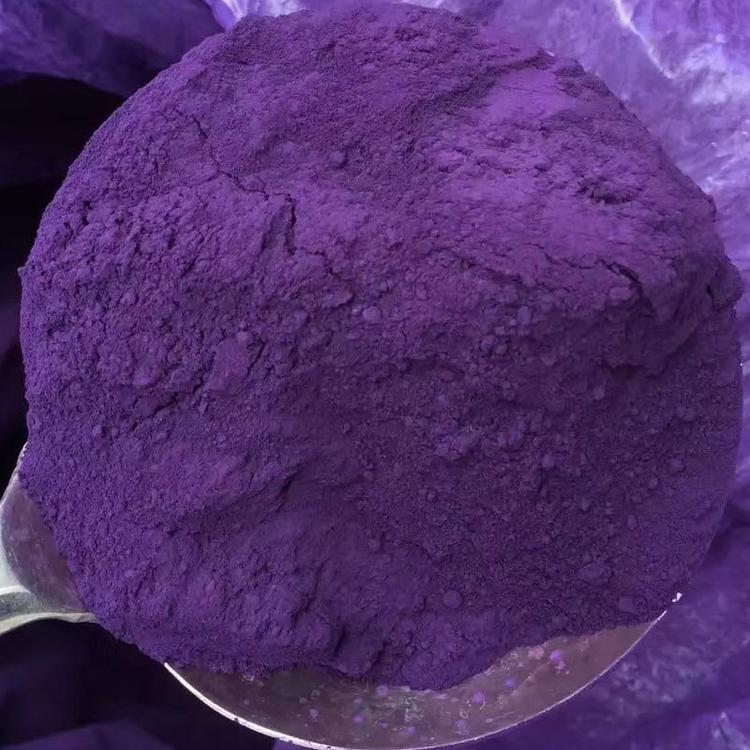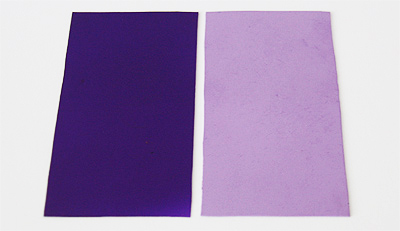
1.Synthesis and Production
A. Raw materials
Primary precursors:
a) 2,5-Dimethylaniline (C8H11N)
b) Succinic acid (C4H6O4) or succinic anhydride (C4H4O3)
Secondary reagents and catalysts:
a) Polyphosphoric acid (PPA) as condensing agent and solvent
b) Sodium nitrite (NaNO2) for diazotization
c) Copper(I) chloride (CuCl) as catalyst for cyclization
Solvents and processing aids:
a) N-Methylpyrrolidone (NMP) for purification
b) Methanol for precipitation and washing
B. Synthesis process
Condensation reaction:
a) 2,5-Dimethylaniline reacts with succinic acid in PPA at 80-100°C
b) Formation of 2,5-diarylaminoterephthalic acid intermediate
c) Reaction time: 4-6 hours under controlled stirring
Ring closure:
a) Temperature increase to 150-180°C
b) Intramolecular cyclization to form quinacridone structure
c) Duration: 2-4 hours with careful temperature control
Oxidation:
a) Addition of sodium nitrite at 80-90°C
b) Oxidation of leuco quinacridone to final quinacridone pigment
c) Reaction time: 1-2 hours with precise pH control (pH 1-2)
Crystal phase control:
a) Heating in high-boiling solvent (e.g., N-methylpyrrolidone) at 200-220°C
b) Conversion to γ-phase crystal modification
c) Duration: 2-4 hours under reflux conditions
C. Purification methods
Filtration and washing:
a) Hot filtration to separate crude pigment
b) Multiple washing steps with water and methanol
c) Acid treatment to remove metal impurities
Solvent treatment:
a) Extraction with NMP to remove organic impurities
b) Reprecipitation by addition to cold water
Milling and classification:
a) Wet milling to achieve desired particle size distribution
b) Classification using hydrocyclones or centrifuges
D. Post-synthesis treatments
Surface treatment:
a) Application of surfactants or resins to improve dispersibility
b) Typical agents: Fatty acid derivatives, polyethylene glycols
Particle size adjustment:
a) Jet milling for ultra-fine particles
b) Controlled aggregation for specific applications

2.Applications
A. Coatings and paints
Automotive finishes
a) High-end metallic and pearlescent finishes
b) Clear coat systems for enhanced durability
c) Color-shifting effects when combined with interference pigments
Industrial coatings
a) Heavy machinery and equipment coatings
b) Appliance finishes
c) Aerospace coatings for both exterior and interior applications
Architectural paints
a) Premium interior wall paints
b) Exterior facade coatings with high weather resistance
c) Wood stains and varnishes for decorative purposes
B. Plastics coloration
Engineering plastics
a) Polyamides (PA) for automotive components
b) Polyoxymethylene (POM) for precision parts
c) Polycarbonate (PC) for electronic housings
Consumer goods
a) Household appliances and kitchenware
b) Toys and sporting goods
c) Personal care product packaging
C. Printing inks
Packaging inks
a) Flexographic inks for flexible packaging
b) Gravure inks for high-quality packaging
c) UV-curable inks for specialty packaging
Publication inks
a) Sheet-fed offset inks for high-end magazines
b) Heat-set web offset inks for catalogs and brochures
Security printing
a) Banknote inks
b) Anti-counterfeiting features in official documents
D. Artists’ colors
Oil paints for fine art
Acrylic paints for both professional and hobby use
Watercolors and gouache
Colored pencils and pastels
E. Textile printing and dyeing
Direct printing on natural and synthetic fabrics
Dye sublimation printing for polyester fabrics
Pigment dyeing for denim and other heavy fabrics
F. Cosmetics and personal care products
Nail polishes and nail art products
Eye shadows and other color cosmetics
Hair dyes and temporary hair color products
G. Emerging applications
Solar cells
a) Organic photovoltaics as a sensitizer
b) Dye-sensitized solar cells (DSSCs) for improved light absorption
Organic electronics
a) Organic light-emitting diodes (OLEDs) for displays
b) Organic field-effect transistors (OFETs)
Biomedical applications
a) Fluorescent markers for cellular imaging
b) Photodynamic therapy agents
H. Specialty papers and cardboards
High-quality gift wrapping papers
Luxury packaging papers
Artist-grade colored papers
I. Ceramics and glass coloration
Ceramic glazes for decorative tiles
Glass enamels for architectural glass
Colored glass for art and decoration
J. 3D printing materials
Colorants for ABS and PLA filaments
Pigments for SLA and DLP resins
Color agents for powder-based 3D printing
K. Rubber and elastomer coloration
Colored rubber flooring
Automotive rubber components
Sporting goods (e.g., yoga mats, exercise bands)
L. Concrete and construction materials
Colored concrete for decorative applications
Pigmented grouts and mortars
Coloration of synthetic stones
M. Functional coatings
Anti-corrosion coatings with color-indicating properties
Heat-reflective coatings for energy efficiency
Antimicrobial coatings with aesthetic appeal
N. Digital printing
Inkjet inks for large format printing
Toners for digital laser printers
Dye-sublimation printing for textiles and hard surfaces
O. Color filters
LCD displays
Optical filters for scientific instruments
Lighting gels for stage and film production

3.Performance Characteristics
A. Color strength and brilliance
Tinting strength
a) High tinting strength with a tinting strength index of 115-125 compared to standard
b) Excellent color development in various media
c) Ability to achieve deep shades with relatively low pigment loading
Masstone characteristics
a) Rich, vibrant violet color in full strength applications
b) Slight reddish undertone contributing to its unique shade
Undertone properties
a) Clean, slightly bluish undertone in tint reductions
b) Consistent undertone across different application media
Chroma and saturation
a) High chroma values, typically 70-75 in CIELAB color space
b) Excellent color saturation, maintaining vibrancy even in deep shades
B. Dispersibility in various media
Organic solvents
a) Excellent dispersibility in polar organic solvents
b) Moderate dispersibility in non-polar solvents, may require dispersing agents
Water-based systems
a) Good dispersibility in water with appropriate surfactants
b) Stable dispersion in aqueous coating formulations
Polymers and resins
a) High compatibility with a wide range of polymer systems
b) Easy incorporation into thermoplastics and thermosets
Dispersion stability
a) Low tendency for flocculation in properly dispersed systems
b) Minimal color float and good color consistency
C. Heat resistance
Thermal stability
a) Excellent color stability up to 280-300°C in most polymer systems
b) Minimal color shift at elevated temperatures
Processing stability
a) Withstands high-temperature processing in plastics (e.g., injection molding)
b) Suitable for high-temperature cure coatings
D. Chemical resistance
Acid resistance
a) Excellent stability in acidic environments (pH 2-7)
b) Minimal color change or degradation in presence of weak to moderate acids
Alkali resistance
a) Good stability in alkaline conditions (pH 7-12)
b) Slight color shift may occur in strongly alkaline environments
Solvent resistance
a) High resistance to common organic solvents
b) Excellent bleed resistance in solvent-based systems
Oxidation and reduction resistance
a) Good stability against oxidizing agents
b) Moderate resistance to strong reducing agents
E. Opacity/transparency
Opacity in full shade
a) Medium to high opacity in masstone applications
b) Hiding power increases with pigment concentration
Transparency in tints
a) Good transparency in tint reductions
b) Suitable for transparent effect finishes and glazes
Influence of particle size
a) Finer particle sizes increase transparency
b) Larger particles or aggregates enhance opacity
F. Lightfastness and weatherability
Lightfastness
a) Excellent lightfastness (8/8 on the Blue Wool Scale)
b) Minimal fading under prolonged exposure to UV light
Weatherability
a) Outstanding weather resistance (typically 5/5 on standard scales)
b) Excellent retention of color and gloss in exterior applications
UV stability
a) High resistance to UV-induced degradation
b) Minimal chalking or color change in outdoor exposures
Below is our Permanent Violet RL product page

